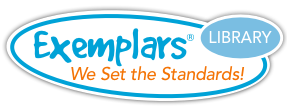Grade 5 - Measurement Unit
Standards covered:
- 5.4 Algebraic reasoning
-
5.4G
Use concrete objects and pictorial models to develop the formulas for the volume of a rectangular prism, including the special form for a cube (V = l x w x h, V = s x s x s, and V = Bh).
-
5.4H
Represent and solve problems related to perimeter and/or area and related to volume.
- 5.6 Geometry and measurement
-
5.6A
Recognize a cube with side length of one unit as a unit cube having one cubic unit of volume and the volume of a three-dimensional figure as the number of unit cubes (n cubic units) needed to fill it with no gaps or overlaps if possible.
-
5.6B
Determine the volume of a rectangular prism with whole number side lengths in problems related to the number of layers times the number of unit cubes in the area of the base.
- 5.7 Geometry and measurement
-
5.7
The student applies mathematical process standards to select appropriate units, strategies, and tools to solve problems involving measurement. The student is expected to solve problems by calculating conversions within a measurement system, customary or metric.
The Measurement Unit involves applying the process of measuring to quantify attributes that can be measured (length, area, volume, capacity, weight/mass and time). Questions to answer may include:
- What is the difference between linear units, units of area, and units of volume?
- Given a formula for finding volume, how can you create a real-world situation to match it?
- How does knowing the relationships between units in the same measurement system help to solve real-world problems?
Summative Assessment Task
Given the dimensions of Maria's box, students determine the dimensions for four possible box sizes that can hold twice as much as Maria's box.
Students determine two possible sets of dimensions for two cereal box displays that will be placed side by side at a grocery store. Students also determine how many cereal boxes the displays can hold.
Instructional Tasks/Formative Assessments
Students continue a pattern to determine how many inches of wire Zack needs to hang his 10th model airplane.
Students determine what time Bella the bald eagle, will reach her nest after flying a distance five kilometers.
Students determine the dimensions for a box to hold a teacher's classroom set of base-10 blocks, with no extra space remaining in the box.
Students determine the number of tissue boxes in each layer of a square pyramid-shaped supermarket display, and determine the volume of the display in tissue boxes.
Students determine how many bags of chocolate chips are used to bake 20 dozen cookies for Mrs. Nelson's cookie order. Students also determine how much money Mrs. Nelson will spend for her cookie order.
Students determine the volume of a second fudge box display, and then determine if the volume of two displays added together will double the volume of the first fudge box display.
Student determine how many one-cup measures are needed to fill a four gallon fish tank.
Students determine the volume of Joseph's new aquarium, and determine how many fish Joseph can put in the aquarium.
Given the dimensions of an old swimming pool, students determine how many loads of dirt it will take to fill in the pool.
Given the weight of one brand-new US penny, students determine how many pennies it would take to reach a weight of one kilogram.

The N/A classification refers to TEKS Standards that cannot be assessed through problem solving.
For this reason, tasks have not been included for these particular standards.
K.7A K.7B K.9B K.9C K.9D